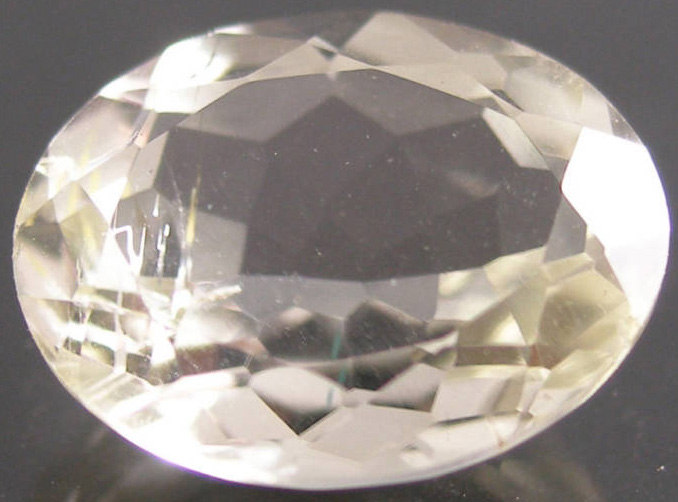Euclase

Euclase
(From Brazil. Weight: 2.34 carats)
Image © supplied by Woodmansee* Gems
Euclase History & Etymology:
Euclase was first found in 1792. Classified as grandfathered crystals by the IMA, Euclase are characterized by their one sided cleavage. Euclase hence derive their name from this characteristic in Greek eu and klasis which literally translate into easy fracture.
Euclase Occurrence:
Euclase is extremely rare and is found in just five localities across the world - namely in Russia, Brazil, Mozambique, Zimbabwe and Germany. Since the one sided cleavage on Euclase make faceting difficult creating gemstones from the Euclase crystals is difficult. The hardness of the Euclase crystals allows them to be used in jewelry but they are also extremely brittle. The largest and clearest gemstone of Euclase was found in Russia weighing 5 carats and had a beautiful light yellow straw coloring.
Euclase Properties:
Euclase is composed of beryllium aluminum silicate hydroxide. The dominant silicon in Euclase classifies the crystals as silicates mineral. The Euclase crystals display monoclinic and prismatic properties. Euclase in their natural form occur as prismatic crystals which might be complex and morphologic in nature. The crystalline masses of Euclase are at least 12 cm in size.
The cleavages on the Euclase crystals are perfect and usually one sided. This one sided cleavage has not only derived the name Euclase but also makes the Euclase crystals extremely brittle. Faceting also becomes extremely difficult due to the one sided cleavage, hence gemstones of Euclase are extremely rare. Also gemstones of Euclase without any fracturing are rarer. The fracturing on the Euclase crystals is conchoidal and the crystals are quite brittle. However Euclase is quite hard with a Moh’s hardness of 7.5. On the other hand Euclase is not very dense - the density is just 3 g/cm3 on an average. Euclase does not display properties of luminescence nor are they radioactive. Euclase usually occur in their colorless form and mostly the gem quality crystals of Euclase are seen to have light yellow and white coloring. Light blue to dark blue as well as light green coloring is also observed but these colorings in Euclase are extremely rare.
The transparency of Euclase ranges from completely transparent to translucent due to inclusions. The luster of Euclase is vitreous and glassy on the cleavages. The refractive index of Euclase varies between 1.65 and 1.67. Similarly the birefringence of Euclase also varies between 0.01 and 0.02. The dispersion observed in Euclase is quite strong with colorless pleochroism.
Euclase naturally occurs where beryl has decomposed in the pegmatites. Hence Euclase also occur naturally in the alpine veins which are characterized by low temperature. The locality which produces the best gem quality crystals of Euclase is located in Minas Gerais in Brazil. The rarity of the gemstones of Euclase fetches the gemstones a price of hundred dollars per carat.

Euclase
(From Brazil. Weight: 3.92 carats)
Image © supplied by Woodmansee* Gems
Back to the Gemstones List home page - over 160 gemstones explored!
Please feel free to link to this page - copy / paste the text below: (click to select)
Privacy Policy | Cookie Policy | GDPR | About This Site / Terms

© gemstoneslist.com 2018


